Reconstruction Era National Historical Park is a new unit of the National Park System that includes places that illustrate nationally important stories of the Reconstruction Era in Beaufort County, South Carolina.
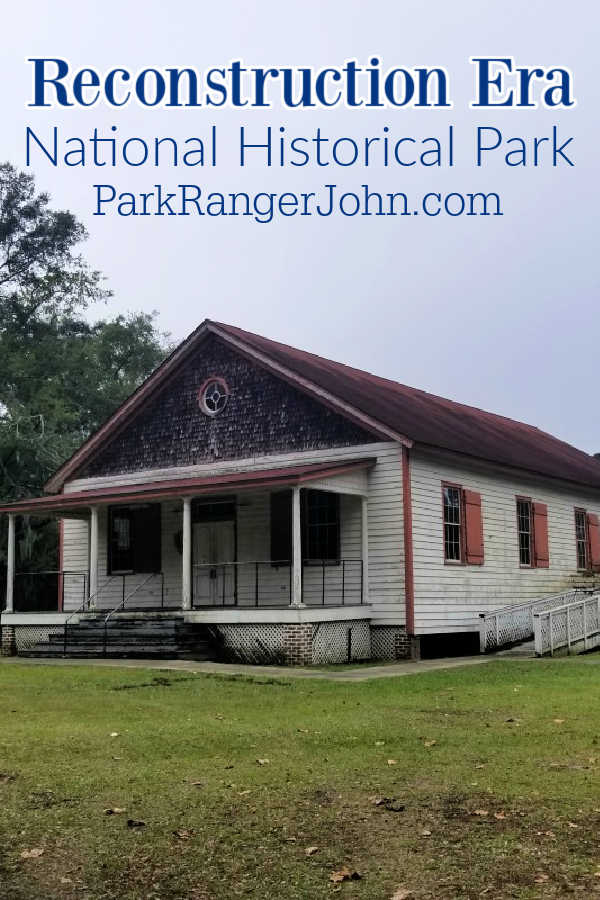
Reconstruction Era National Historical Park
Currently, the park service is building the national monuments infrastructure so visitors can experience more of the park.
Previously named Reconstruction Era National Monument was re-designated as Reconstruction Era National Historical Park in March 2019.
Reconstruction Era National Monument is a park in progress!!! This means that the National Park Service is still building out this park and you may not be able to visit the visitor center or other sites.
We stopped by the visitor center and one of the sites during a recent trip to South Carolina. We, unfortunately, missed the visitor center being open.
About Reconstruction Era National Historical Park
The Reconstruction Era was from 1861 to 1898. This era was when the United States was grappling with the question of how to integrate millions of newly freed African Americans into social, political, economic, and labor systems.
The events that happened in Beaufort County, South Carolina make it an ideal place to tell the stories of this era.
Beaufort County was one of the first places in the United States where formerly enslaved people could begin integrating themselves into free society. Many of the formerly enslaved people enlisted in the army. During this era, the government began an early effort to redistribute land to former slaves.
The effort to help formerly enslaved people become self-sufficient became known as the Port Royal Experiment. The government partnered with antislavery and religious groups from the North to raise resources and recruit volunteers.
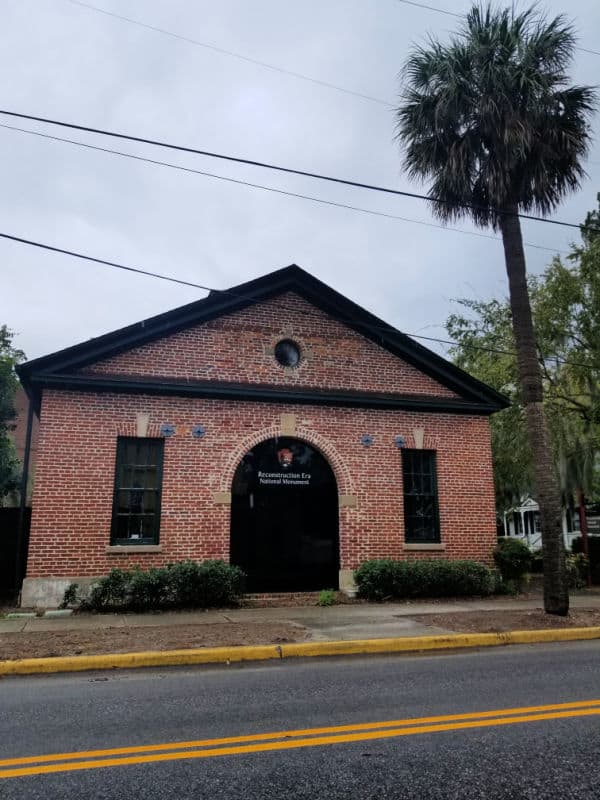
Is Reconstruction Era National Historical Park worth visiting?
Yes, but you will want to be prepared that it is a park in progress.
The park may not have the services you are used to seeing when visiting National Park Sites as they create new programs and get established.
History of Reconstruction Era National Historical Park
The Reconstruction Era National Historical Park is located in Beaufort, South Carolina. The idea to create a National Monument for the Reconstruction Era began towards the end of President Bill Clinton’s administration.
Fifteen years later, a site was chosen and President Barack Obama dedicated the historic monument in January 2017 (it was later renamed as a national historical park).
The American Civil War began in April of 1861 and lasted until April of 1965. Following the deadliest American military conflict in history, the country’s work was just beginning.
Lincoln’s assassination just 6 days after the war ended immediately affected the plan for Reconstruction.
Andrew Johnson was appointed President and it would be a political battle trying to establish the road to bringing the Union together. A road that would last many years longer than anticipated.
Lincoln’s dream for Reconstruction involved bringing the southern states back into the Union in an agreeable way, guaranteeing rights to formers slaves, redefining the relationship between African Americans and whites, and defining what kind of political system should be governing the “new” Union.
Lincoln was in support of the southern states being welcomed back to the Union if 10% of the voters in the state-supported the Union.
The catch was, any state that was readmitted must make slavery illegal in their state constitution.
President Johnson was from the south and his plan involved much more leniency for the Confederate leaders and southern states. Congress did not approve of these ideals and followed more of the vision that Lincoln had had.
Southern states came up with ways to get around Congress’ laws, namely by passing “Black Codes” in their states.
These laws prevented African Americans from voting, going to school, and even getting jobs. These laws did not help soften still mounting tension following the Civil War.
Between 1865 and 1870 Congress adopted 3 new amendments to the U.S. Constitution.
The 13th Amendment outlawed slavery; the 14th Amendment stated that African Americans were legal citizens of the United States and that all citizens should be treated equally under the law, and the 15th Amendment gave all male citizens the right to vote no matter their race.
The Union also helped the South to rebuild after the war. They helped reconstruct roads, revived farmland, and built schools for children of poor and black families.
In 2000, Bruce Babbit, secretary of the interior, made a phone call to Reconstruction Era historian Eric Foner.
Babbit suggested the creation of a historical site representing the struggle in the United States to rebuild and reshape a nation.
His plan was to establish this site in Beaufort, South Carolina. Babbit recognized that there were numerous National Park sites all over the country devoted to the education of the Civil War, but no sites dedicated to conveying the extremely significant time period following the Civil War.
It would take years of legalities and getting past still prevalent supporters of the Confederate in South Carolina to truly get the project off the ground.
Nonetheless, Babbit knew Beaufort, SC was an ideal place to house an educational site showing one of America’s most important time periods.
In 1861 at the beginning of the Civil War, southeastern South Carolina was taken under Union control. Wealthy plantation owners fled the area; nearly 10,000 slaves refused to flee with them.
Beaufort County became one of the first places in the nation where former slaves began integrating into society. Many joined the army and some came together to establish schools.
It is no surprise that prominent African American figures came from this area at this period of time, including future politician Robert Smalls.
Because the area was under federal control, the U.S. Government sent officials and chosen antislavery activists to Beaufort County to assist with integration.
The government called this the “Port Royal Experiment.” Two distinguished teachers from Pennsylvania traveled to Beaufort and taught at a temporary school at the Brick Church on St. Helena Island, about 15 miles from Beaufort.
Eventually, land was bought from an African American landowner, Hastings Grant, and a larger school was built.
The new school, called the Penn School, became an important location for education and African American progress for years to come. (Civil Rights leaders, including Dr. Martin Luther King, Jr., would use this location almost 100 years later as a meeting location.)
On January 1, 1863, a historic event occurred in Beaufort. Lincoln’s Emancipation Proclamation was read aloud to a large and eager crowd celebrating its message.
Several historic African American activists have ties to Beaufort. Harriet Tubman, the famous abolitionist, spent much of her time in and around Beaufort organizing the Underground Railroad.
She assisted African Americans in liberating themselves and joining Union forces.
Robert Smalls was born in Beaufort in 1839, the son of slaves. His life is a testament to the grit and determination of many African Americans of the time.
His fame began in 1862 with a heroic act. Smalls commandeered a Confederate ship and delivered 17 enslaved men, women, and children to freedom. He instantly became a Union war hero.
As a reward for delivering this Confederate ship to the Union, Small’s family received monetary thanks, which they used to purchase the Beaufort house previously owned by the slaveholders that owned the Smalls.
Smalls served in the South Carolina General Assembly and was elected to the U.S. House of Representative in 1874 in which he served five terms.
As states began instituting Jim Crow laws in the south, it seemed as though the African American victories and progress has been acquired in vain.
Even though African American segregation and struggles would continue for many decades to come, the fight and resilience of Beaufort County, and others like it in the south, paved the way for the Civil Rights Movement beginning in the 1960s.
On January 12, 2017 as President Barack Obama dedicated the Reconstruction Era National Monument, many smiled in agreement that Beaufort had been the appropriate location.
The proof of determination and resiliency of African Americans is shown through the landmarks and stories of those who fought for freedom and a new way of life during the Reconstruction Era.
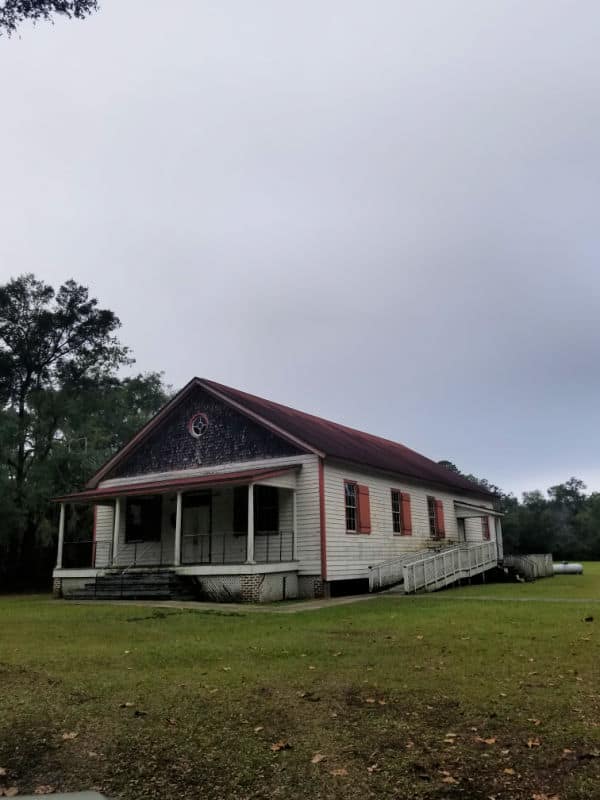
Things to know before your visit to Reconstruction Era National Historical Park
Entrance fee
$0.00 - There is no fee to visit the park.
Learn more about National Park Passes for parks that have an entrance fee.
$80.00 - For the America the Beautiful/National Park Pass. The pass covers entrance fees to all US National Park Sites and over 2,000 Federal Recreation Fee Sites for an entire year and covers everyone in the car for per-vehicle sites and up to 4 adults for per-person sites.

Buy your pass at this link, and REI will donate 10% of pass proceeds to the National Forest Foundation, National Park Foundation, and the U.S. Endowment for Forestry & Communities.
National Park Free Entrance Days -Mark your calendars with the five free entrance days the National Park Service offers annually.
Time Zone
EST - Eastern Standard Time
Pets
Pets must be on a leash less than 6 feet in length. Pets are not allowed in buildings.
Cell Service
We had pretty good service in most parts of the park.
Park Hours
- Darrah Hall is open Tuesday through Saturday, 9 am to 5 pm.
- The park visitor center is open at a reduced capacity, Tuesday through Saturday from 9 am to 5 pm.
- Pinckney-Porter's Chapel Visitor Contact Station is open at a reduced capacity Tuesday through Saturday from 9 am to 5 pm.
- Park grounds and exterior of park buildings are open daily.
Wi-Fi
WiFi is not available in the park.
Insect Repellent
Insect repellent is always a great idea when outdoors, especially if you are around any body of water.
We use Permethrin Spray on our clothes before our park trips.
Water Bottle
Make sure to bring your own water bottle and plenty of water with you. Plastic water bottles are not sold in the park.
Parking
There is metered street parking near the visitor center.
Food/Restaurants
There are no restaurants associated with the park. There are many restaurants in Beaufort County.
Gas
There are no gas stations associated with the park.
Drones
Drones are not permitted within National Park Sites.
National Park Passport Stamps
National Park Passport stamps can be found in the visitor center.
We like to use these circle stickers for park stamps so we don't have to bring our passport book with us on every trip.
The National Park Passport Book program is a great way to document all of the parks you have visitied.
You can get Passport Stickers and Annual Stamp Sets to help enhance your Passport Book.
Electric Vehicle Charging
Beaufort, South Carolina has 4 public EV charging stations.
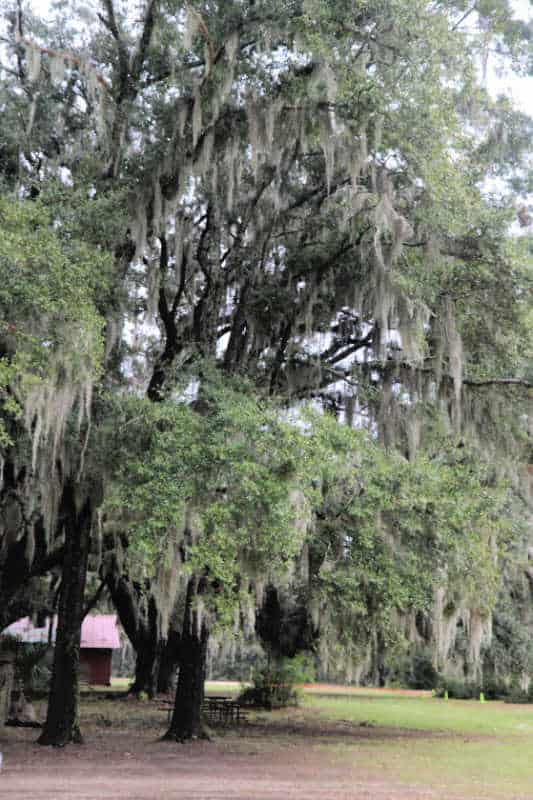
Details about Reconstruction Era National Historical Park
Size - 64.99 acres
Check out how the park compares to other National Parks by Size.
Date Established
January 12, 2017, President Barack Obama created Reconstruction Era National Monument.
On March 12, 2019 Congress passed legislation and re-designated the park as a National Historical Park, and established the Reconstruction Era National Historic Network.
Visitation
Currently, visitation statistics are not available for the park.
Learn more about the most visited and least visited National Parks in the US
National Park Address
Visitor Center address - 706 Craven Street, Beaufort, South Carolina
Reconstruction Era National Historical Park Map
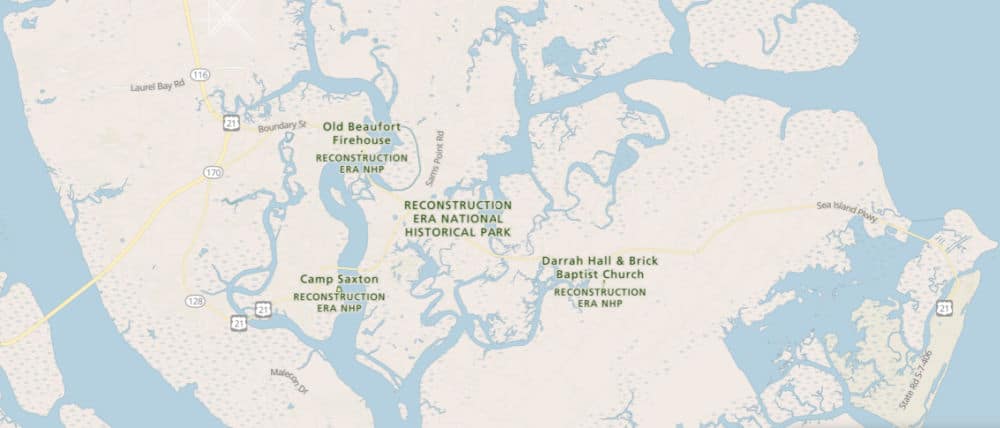
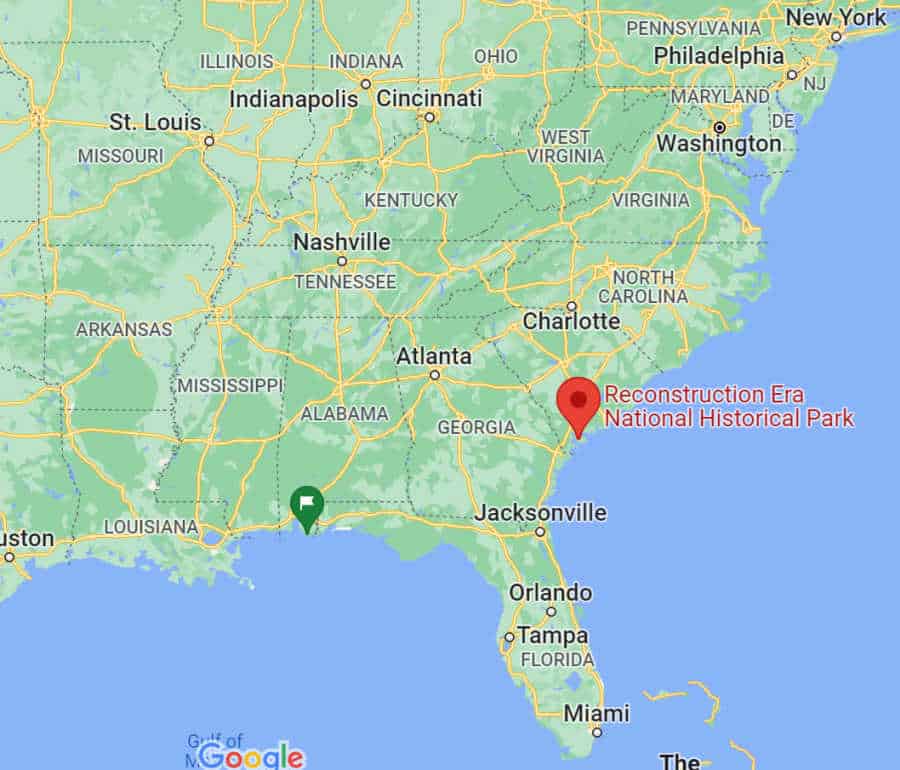
Where is Reconstruction Era National Historical Park
Reconstruction Era NHP is located in southern South Carolina in Beaufort.
Estimated distance from major cities nearby
- Jacksonville, FL - 156 miles
- Charlotte, NC - 193 miles
- Atlanta, GA - 235 miles
- Greensboro, NC - 257 miles
- Raleigh, NC - 260 miles
- Orlando, FL - 272 miles
- Tampa, FL - 327 miles
- Chesapeake, VA - 394 miles
Estimated Distance from nearby National Park
Congaree National Park - 123 miles
Great Smoky Mountains National Park - 313 miles
New River Gorge National Park - 435 miles
Shenandoah National Park - 476 miles
Mammoth Cave National Park - 586 miles
Cuyahoga Valley National Park - 719 miles
Where is the National Park Visitor Center?
The visitor center is located in Beaufort, South Carolina
Getting to Reconstruction Era National Historical Park
Closest Airports
Hilton Head Airport (HHH)
International Airports
Savannah Hilton Head International Airport (SAV)
Driving Directions
Visitor Center from Hilton Head
(about 33 miles, approximately 45 minutes)
Take U.S. 278, west about 10 miles,
Exit onto S.C.170/Okatie Highway toward Beaufort, continue 19.5 miles,
Slight right onto Boundary Street/U.S. 21 Business, continue 2 miles,
Continue through sharp right curve onto Carteret Street,
Continue .4 miles, then take right on Craven Street.
The visitor center is at 706 Craven Street, across the street from the Beaufort Arsenal. On-street parking is available in the vicinity.
Visitor Center from Savannah
(about 40 miles, approximately 1 hour)
Take U.S. 17 north, entering South Carolina,
Turn right onto S.C. 315 north/South Okatie Highway, continue 8.9 miles,
Continue onto May River Road,
At the traffic circle, take the third exit onto S.C. 170 east, continue 19.5 miles,
Slight right onto Boundary Street/U.S. 21 Business, continue 2 miles,
Continue through sharp right curve onto Carteret Street,
Continue .4 miles, then take right on Craven Street,
The visitor center is at 706 Craven Street across the street from the Beaufort Arsenal. On-street parking is available in the vicinity.
Visitor Center from Charleston
(about 65 miles, approximately 75 minutes)
Take U.S. 17 south, continue about 50 miles,
At the traffic circle, take the second exit onto Trask Parkway, continue 13 miles,
Continue through sharp right curve onto Carteret Street,
Continue .4 miles, then take right on Craven Street,
The visitor center is at 706 Craven Street across the street from the Beaufort Arsenal. On-street parking is available in the vicinity.
Best time to visit Reconstruction Era National Historical Park
Early spring and late fall are great times to visit the park.
Weather and Seasons
Summers are hot and hot and hot! Winters are short but cold and windy.
The hottest temperatures are from May 25 to September 16th with an average daily temperature over 84 degrees.
The coolest weather is from December 1 to February 28th with an average temperature below 66 degrees.
August gets the most rain with 15.2 days of rain during the month.
The muggiest weather is from May 3 to October 24th.
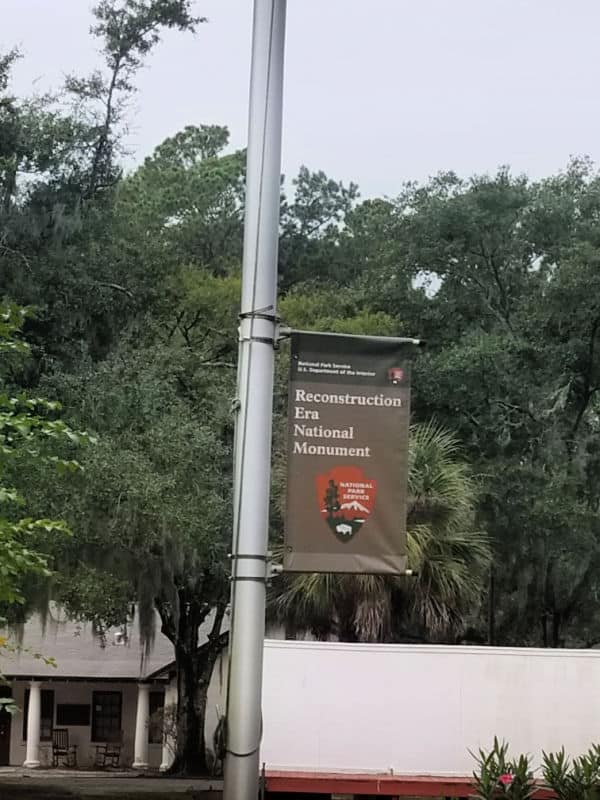
Best Things to do in Reconstruction Era National Historical Park
Reconstruction Era NHP has multiple locations within the park. We suggest starting at the visitor center and then heading out from there.
In addition to the four locations listed below, there is also a number of places in the region that share stories and history of the Reconstruction Era.
Additional sites that are not part of the National Park Service site include Beaufort History Museum, Mitchelville, and Fort Howell.
Visitor Center
The visitor center is located in the Old Beaufort Firehouse.
Junior Ranger Program
The park does not have a Junior Ranger program showing online. They may have one that is under development at the visitor center.
Camp Saxton
Established in 1862, Camp Saxton is near the Smith Plantation on Port Royal Island.
Camp Saxton was home to the 1st South Carolina Infantry which was later renamed the 33rd United States Colored Troops.
The Emancipation Proclamation was read to the troops of the 1st South Carolina Infantry on January 1, 1863. Hundreds of formerly enslaved people were also read the proclamation.
Check the park's calendar for guided park ranger tours.
Brick Baptist Church
Enslaved people built the Brick Baptist Church on St. Helena Island in 1855.
It was a place of worship for white planters. If you look closely look at the bricks you can see fingerprints of the enslaved workers who built the building.
The church became a haven for enslaved people after the Union Army liberated the island.
The National Park Service preserves the outside of the building. The building is still an active church congregation so the interior is not open to the public.
Brick Baptist Church Address - 85 Martin Luther King Drive, St. Helena Island, South Carolina.
Penn Center
Penn Center is also located on St. Helena Island. It is a cultural and educational center.
It started as the Penn School which was one of the first southern schools organized by northern missionaries for formerly enslaved people.
Later it became where the Southern Christian Leadership Conference (SCLC) held Citizen Education Programs.
Dr. Martin Luther King SL was hosted during the 1960s.
Near the Penn Center is Darrah Hall which is managed by the National Park Service.
Darrah Hall contains temporary exhibits about the origins of Reconstruction and the region.
Darrah Hall is the oldest standing structure on the site of the Penn School Grounds. The building was built around 1903 by community members and students.
Beaufort Guided Tours
Beaufort SC Historic City Tour by Bus - On this 1.25-hour driving tour, explore the historic district of Beaufort, including the famous Old Point area and The Bluff with its antebellum houses and churches.
Beaufort Local History and Film Sites tour by Golf Cart - This 1-hour tour by golf cart covers Beaufort’s historic district and gives you a chance to learn more about the town and its history. Discover the sites and homes where the stars stayed in downtown Beaufort.
Pat Conroy's Beaufort Tour by Golf Cart - View sites from Pat’s life including his homes, Great Santini and Prince of Tides filming locations, and the Pat Conroy Literary Center.
Spirit of Old Beaufort Heritage Tour - Embark on a 3-hour tour to South Carolina’s Sea Islands in a comfortable, climate-controlled vehicle. Visit several areas of Beaufort County and discover its history and Gullah-Geechee culture.
How to beat the crowds in Reconstruction Era National Historical Park?
We did not experience any crowds during our visit. You may experience parking issues trying to find parking on busy weekends in town.
Where to stay when visiting Reconstruction Era National Historical Park
There are no National Park Lodges within the park.
Cuthbert House Inn - 3.5-star boutique bed & breakfast in the heart of Historic District. free full breakfast, a free daily manager's reception, and a terrace. Free in-room Wi-Fi, with speed of 500+ Mbps (good for 6+ people or 10+ devices), is available to all guests, along with a garden and a library.
Rhett House Inn - 4-star historic bed & breakfast in the heart of Historic District. At Rhett House Inn, you can look forward to free full breakfast, a roundtrip airport shuttle, and a terrace. Free in-room Wi-Fi is available to all guests, along with shopping on site and a garden.
Hampton Inn Beaufort - Take advantage of free to-go breakfast, a garden, and dry cleaning/laundry services at Hampton Inn Beaufort. Free in-room Wi-Fi is available to all guests, along with a gym and a 24-hour business center.
Holiday Inn Hotel & Suites Beaufort - At Holiday Inn Hotel & Suites Beaufort at Highway 21, an IHG Hotel, you can look forward to a terrace, a playground, and dry cleaning/laundry services. Be sure to enjoy a meal at Albergotti Grill, the onsite restaurant. Stay connected with free in-room Wi-Fi, and guests can find other amenities such as a bar and a 24-hour gym.
Click on the map below to see the current rates for hotels and vacation rentals in Beaufort, South Carolina.
Camping
There are no campgrounds within the park.

For a fun adventure check out Escape Campervans. These campervans have built in beds, kitchen area with refrigerators, and more. You can have them fully set up with kitchen supplies, bedding, and other fun extras. They are painted with epic designs you can't miss!
Escape Campervans has offices in Vancouver, Seattle, Portland, San Francisco, Las Vegas, Los Angeles, Phoenix, Salt Lake City, Denver, New York, and Orlando
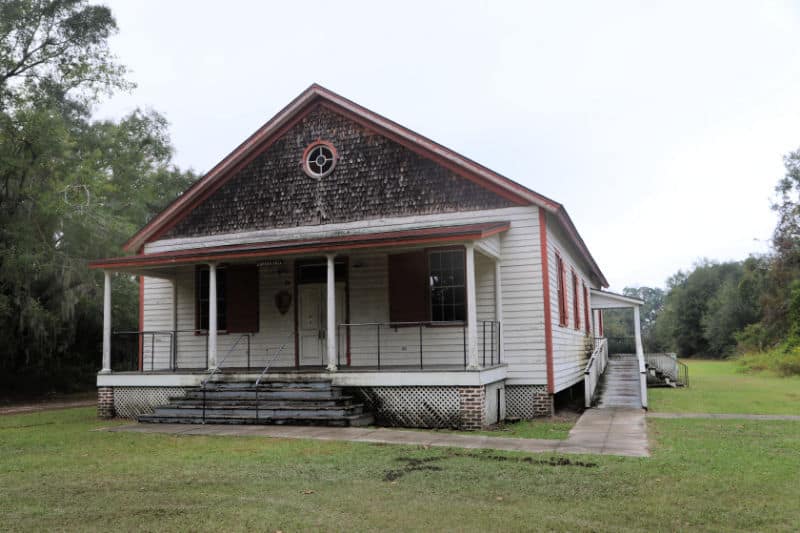
Additional Resources
Reconstruction Era: A History from Beginning to End (American Civil War)
Reconstruction and the Aftermath of the Civil War (Understanding the Civil War)
The Wars of Reconstruction: The Brief, Violent History of America's Most Progressive Era
Parks Near Reconstruction Era National Historical Park
Fort Sumter National Monument - 78 miles
Fort Pulaski National Monument - 62 miles
Fort Frederica National Monument - 132 miles
Charles Pinckney National Historic Site - 90 miles
Ocmulgee Mounds National Historical Park - 204 miles
Check out all of the National Parks in South Carolina along with neighboring National Parks in Georgia, and North Carolina National Parks
Check out all of the National Historical Parks managed by the NPS
Make sure to follow Park Ranger John on Facebook, Instagram, Pinterest, and TikTok





Leave a Reply